CBN vs. CBG: Which Cannabinoid Should You Choose?
Summarize
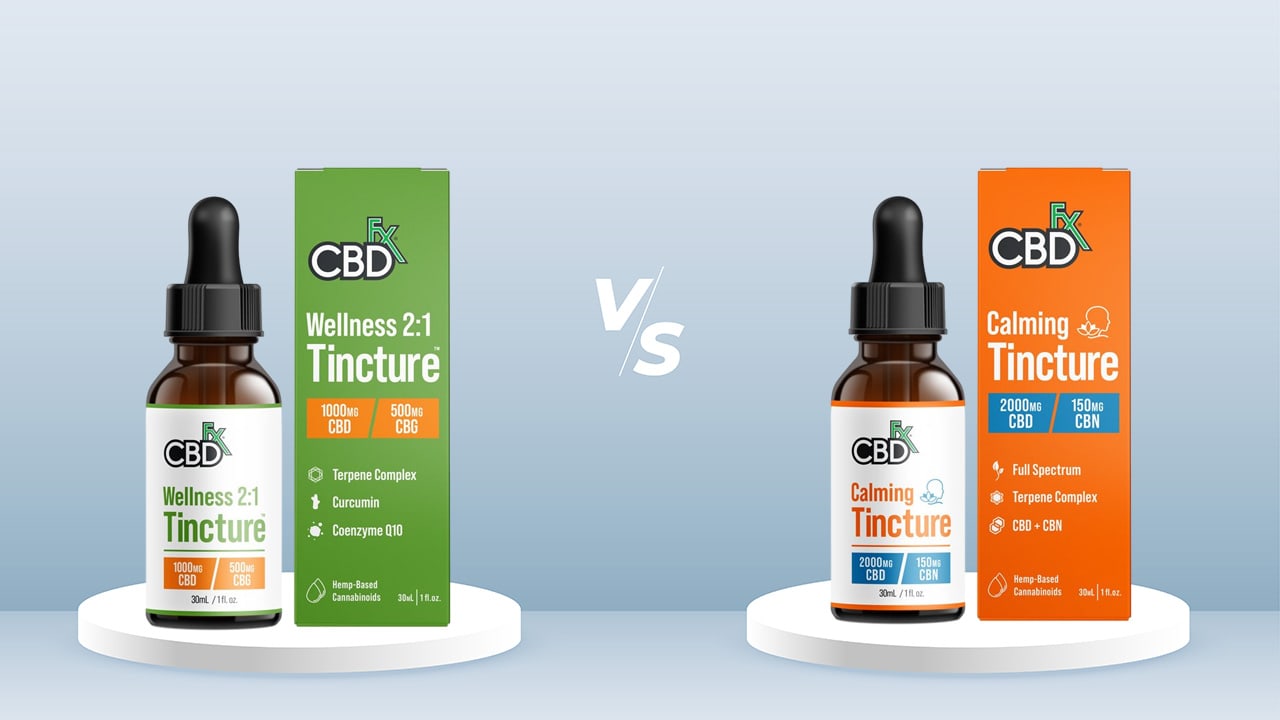
When you shop for CBD products, chances are you will also notice many of the products mention CBN and CBD. The hemp plant has hundreds of minor cannabinoids, and two of the ones identified are CBN and CBG. What makes these cannabinoids increasingly popular, and what is the difference between CBD, CBG, and CBN?
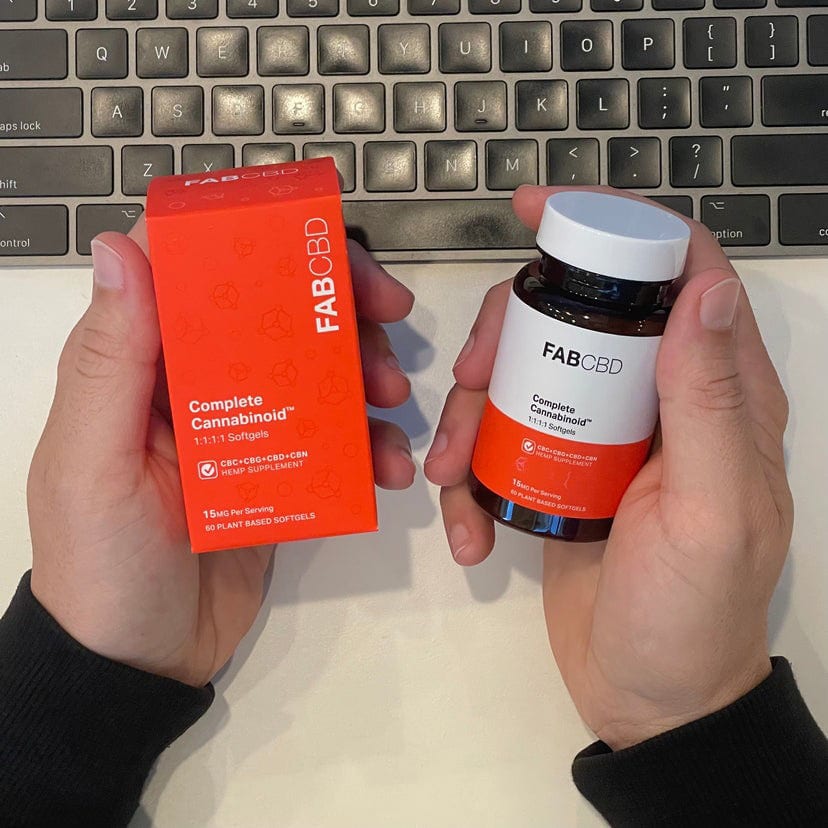
TL;DR (Too Long; Didn’t Read):
CBN and CBG are called minor cannabinoids because they exist in smaller quantities in the hemp plant. They both interact with the endocannabinoid system. It is believed these cannabinoids may have wellness properties. CBN, which forms from THC degrading in the plant, may help reduce sleep disturbances. CBG, the precursor of CBD and THC, may help people fall asleep. CBN and CBG may deliver other potential benefits. Research is minimal but ongoing, so nothing is definitive at this point.
Table of Contents
What is CBN?
CBN is the cannabinol cannabinoid that forms when THC breaks down in the cannabis sativa plant. As the hemp plant ages, THC begins to degrade. When THC is exposed to light, air or heat as the plant ages and during storage time after harvesting, the new cannabinoid form is CBN.
What is CBG?
CBG (cannabigerol) is another cannabinoid in the cannabis plant. It is called the “mother of all cannabinoids” because it is the precursor of the CBD and THC cannabinoids. CBG is formed from the decarboxylation (carbon dioxide is removed) of the cannabis plant’s cannabigerolic acid CBGA when CBGA is exposed to heat. CBGA is a basic element in the hemp plants that are used to extract cannabinoids for sale in the CBD industry. CBG is one of the rare cannabinoids because of the natural chemical conversion process.
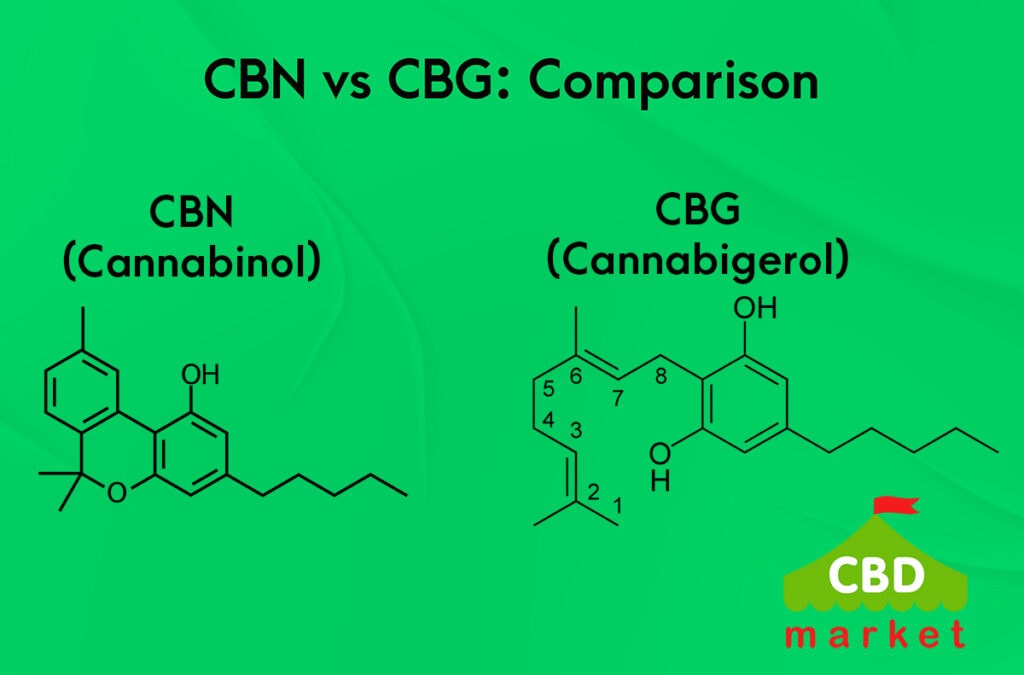
CBN VS. CBG: Differences
The CBD industry now offers numerous brands and products. Understanding the differences between CBD, CBN, and CBG helps you choose the products that are most likely to deliver the desired benefits. CBD is a major cannabinoid and is the main hemp plant extract in most products sold today. CBN and CBG are minor cannabinoids.
CBD products that have CBN and/or CBG are full spectrum or broad spectrum CBD products to which high amounts of one of the minor cannabinoids have been added. It requires special processing to extract higher amounts of any of the minor cannabinoids because there is a smaller amount of them in the hemp plant compared to the major cannabinoids like CBD and THC.
CBG is found in smaller amounts in the hemp plant compared to other cannabinoids because the CBG converts to THC and CBD as the hemp plant ages. CBG is not psychoactive. It binds to the endocannabinoid system’s CB1 and CB2 receptors but has shown a higher affinity for CB1 than CB2. However, that affinity is weak compared to THC, which is why CBG is not psychoactive.
CB1 receptors are believed to play an active role in regulating sleep. Acting as an agonist for the CB1 receptor means CBG is believed to activate the receptors that modulate the release of hormones like serotonin. Studies have reported that CBG’s effects on the endocannabinoid system may improve sleep disorders.
CBN is considered non-psychoactive in normal doses because it has a lower affinity for the CB1 receptors compared to THC. There is a potential to experience mild psychoactive effects when taking large doses. It does not exist in the hemp plant until THC aging and oxidation take place. Though research on the ability of CBN to improve sleep is limited, plenty of anecdotal evidence indicates it does.
CBN vs CBG Comparison Chart
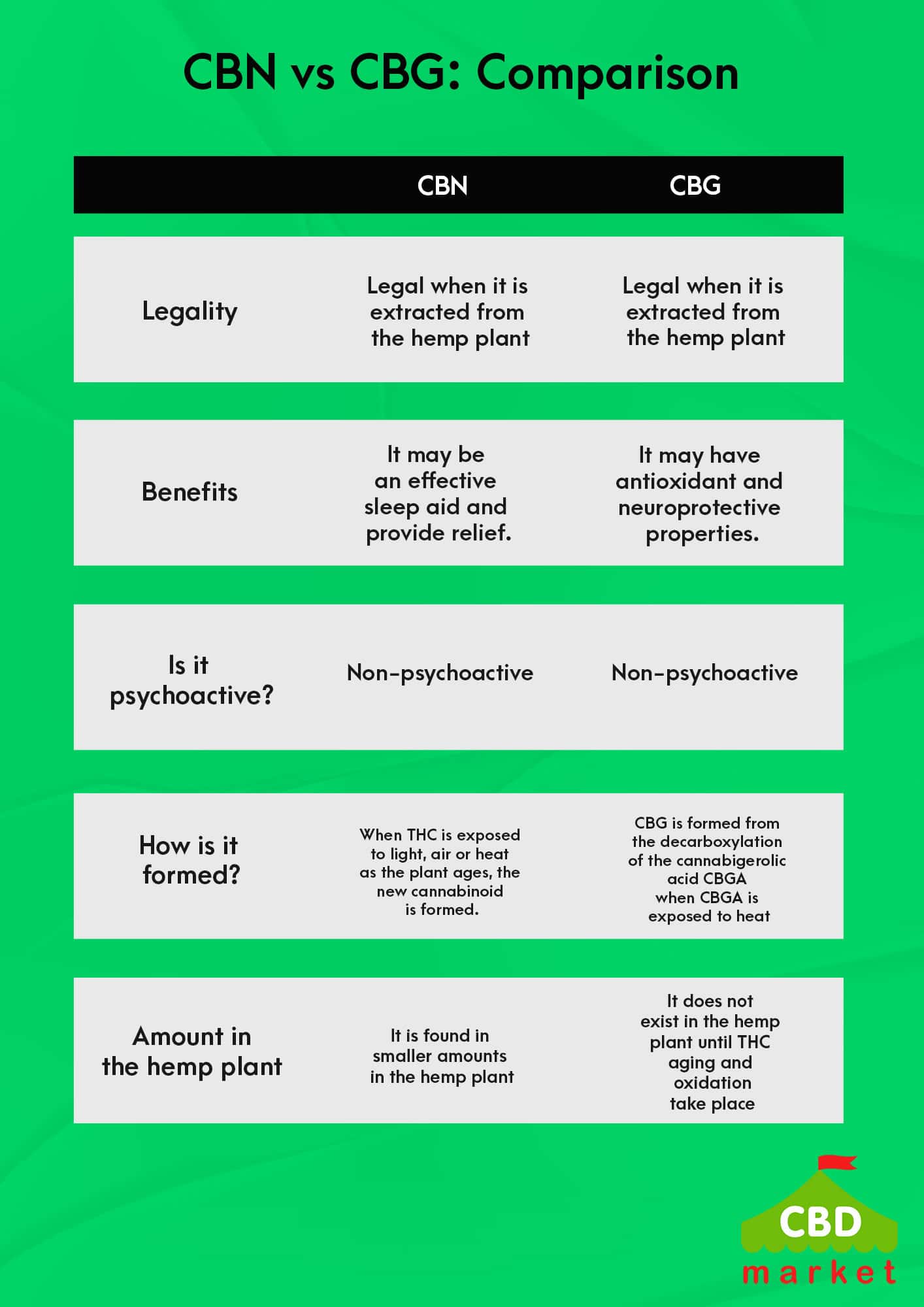
CBN VS. CBG: What is Common?
CBN and CBG are safe to consume and interact with the endocannabinoid system.
CBG and CBN are considered non-psychoactive compounds because they interact with the receptors in the endocannabinoid system. They both have been shown in studies to have possible effects that include relieving.
Another commonality of CBG and CBN is that both may deliver the entourage effect when combined with the hemp plant’s other natural compounds. These compounds include CBD, THC, other minor cannabinoids, terpenes and flavonoids. The entourage effect refers to compounds producing a greater effect through interaction than when taken alone.
CBN vs. CBG in Comparison with CBD
How do you compare CBN vs CBD vs CBG? First, CBD is a major cannabinoid in the hemp plant. CBN and CBG are minor cannabinoids. These three cannabinoids are just three out of hundreds of cannabinoids believed to exist in the hemp plant. CBD, CBN and CBG are each a unique cannabinoid. A CBD, CBG, and CBN chart would show they produce various effects, some of which are the same and some are different. The challenge is that CBD has a large body of research backing up its potential effects. CBN and CBG need much more research.
CBD, CBN, and CBG all work on the endocannabinoid system, are non-psychoactive and are safe to consume. However, the three cannabinoids work in different ways in the body. CBD interacts with the CB1 and CB2 endocannabinoid and TVRP1 receptors. The TVRP1 receptors regulate things like body temperature and feelings of relaxation. CBN and CBG have been found to interact with the CB1 and CB2 receptors that regulate the nervous system and the immune system. CBG and CBN bind to some degree to both receptors.
CBG is believed to be a partial agonist of the CB1 and CB2 receptors and an endocannabinoid signaling regulator. It may have antioxidant and neuroprotective properties.
CBN does interact with the CB1 and CB2 receptors, but the strongest interaction is with CB2 receptors, which manage the immune system. There is some research indicating CBN may be an effective sleep aid for people suffering from sleep disorders.
In general, CBD is believed to have the most wide-ranging effects. Once again, more research is needed to understand the properties of CBD, CBN and CBG and how they work in the body.
It is believed that cannabinoids can work together to deliver higher benefits. For example, CBN may be an effective sleep aid, and combining it with CBD may produce even greater effects. Like CBD, CBG may offer relief and has been shown to have calming properties. Once again, combining CBD and CBG may increase the desired effects.
Are CBG and CBN Legal?
CBG and CBN are legal when they are extracted from the hemp plant. As defined by the 2018 federal Farm Bill, the hemp plant is a cannabis plant that has less than 0.3% THC in dry weight. It is also called industrial hemp.
CBN vs. CBG for Sleep
Comparing CBD vs CBG vs CBN for sleep reveals that research is finding each cannabinoid delivers unique effects. CBD is the most studied cannabinoid to date, and what is known about CBG and CBN is limited. There is some research, though, that indicates CBN and CBG may help address sleep disorders in different ways.
CBN is sometimes called the sleepy cannabinoid because clinical trials have found that CBN may reduce sleep disturbances. A recent study found that participants who said they were experiencing poor or very poor sleep found taking 20 mg of CBN alone led to fewer nighttime awakenings and other sleep disturbances.
The Sleep Foundation mentions small studies conducted in the 1970s and 1980s that found taking CBN and THC together promoted drowsiness. There is interest in pursuing more studies of CBN for its potential to induce sleepiness and whether it has more benefits when combined with terpenes.
One reason for the high interest in conducting more research on CBN for sleep is growing anecdotal evidence that cannabinol (CBN) does help improve sleep quality.
CBG may help you fall asleep. It is believed to have an impact on the brain’s anandamide neurotransmitter. This transmitter reduces feelings of discomfort and regulates appetite and sleep. Since CBG may also reduce unpleasant feelings, it helps people fall asleep.
A recent clinical study found that eight weeks of taking 50 mg of oral CBD significantly improved sleep quality.
The bottom line is that CBG may help you fall asleep, and CBN may help you stay asleep because you experience fewer sleep disruptions. Taking CBN and CBG together may help you fall asleep and stay asleep.
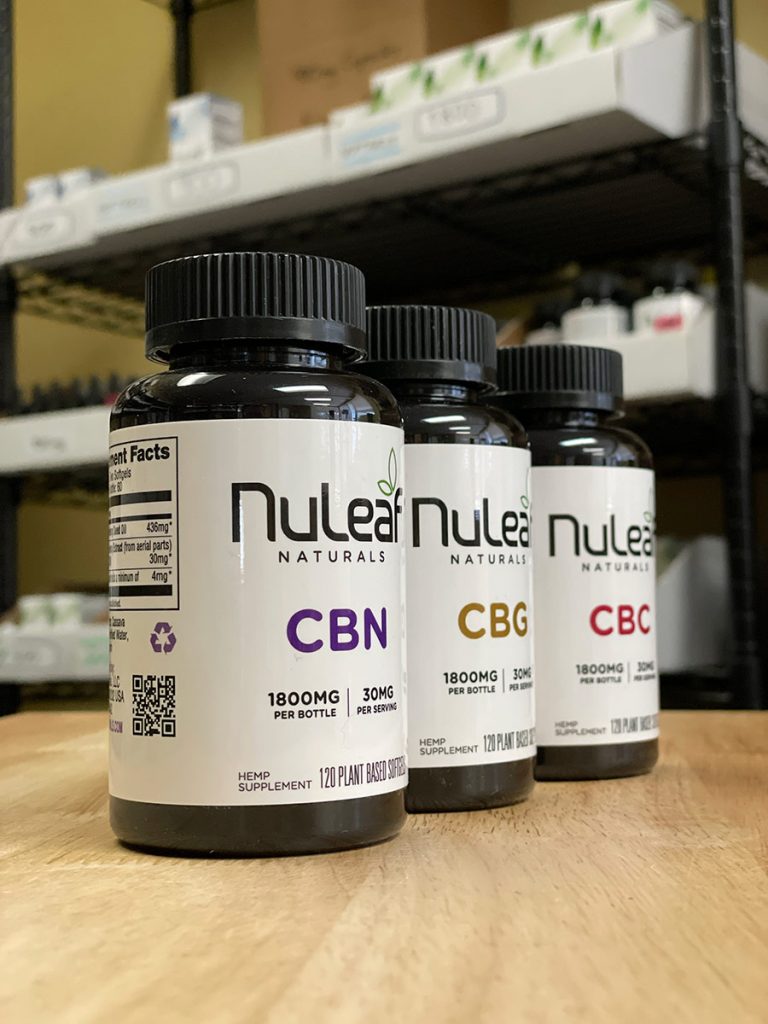
CBN vs. CBG for Relief
CBN and CBG have been identified in numerous studies as having properties that alleviate swelling and discomfort. CBG may also have neuroprotective properties, with research suggests it may help in lessening nerve tissue irritation. Research suggests how CBG interacts with the ECS may make it more beneficial in reducing feelings of discomfort.
As noted, CBN may improve sleep quality by reducing sleep disturbances. CBG may help you fall asleep. Each cannabinoid has properties that can possibly provide relief, which contributes to poor sleep. CBG may reduce feelings of discomfort associated with its neuroprotective properties.
The best way to get the most benefits from the hemp plant compounds is to take a full spectrum CBD product. It is a holistic approach because full spectrum CBD has CBD, less than 0.3% THC, minor cannabinoids that include CBN and CBG, flavonoids and terpenes. You get the full power of the hemp plant compounds. CBD products enhanced with higher concentrations of CBN and CBG may provide the relief sought.
The fact is that CBN and CBG need more research, but the research to date has shown both cannabinoids may provide consumers with benefits that promote wellness. No definitive health claims can be made because of the limited research. People taking these cannabinoids are reporting good results and no safety concerns. This is similar to CBD.
FAQs
Does CBG or CBN help you sleep?
CBG and CBN can improve sleep, but not in the same way. CBG products, such as gummies, may help you relax and fall asleep. CBN may help you stay asleep. A lot depends on what is keeping you awake to decide which cannabinoid would be most helpful, or if taking both is the best idea.
Can I take CBG and CBN together?
Yes, you can take CBG and CBN together. The full spectrum CBD and broad spectrum CBD products contain CBG and CBN, plus other cannabinoids. Taking CBG and CBN together may increase the effects of the cannabinoids due to synergy or the entourage effect.
Does CBN make you sleepy?
Anecdotal evidence and limited research indicate CBN may improve sleep. People are reporting that CBN seems to have sedative properties. Some CBD products for sleep with higher concentrations of CBN are helping people who have trouble staying asleep.
CBN vs CBG: What to Choose?
CBN and CBG each have properties that may help reduce discomfort, sleep issues, and more. If you are looking for a natural way to promote wellness, taking both cannabinoids is a good choice. CBG is the least converted cannabinoid, whereas CBN has undergone several natural plant chemical processes. If you are looking for a cannabinoid that people are finding has the most relaxing effects, then CBN is a good option.
Conclusion
As the popularity of a variety of cannabinoids grows, people are asking,
“What is CBN and CBG?” or “What is the difference between CBD, CBG and CBN?”
It can be confusing because there is a need for more research.
CBD, CBN, and CBG are all cannabinoids found in the hemp plant. Each of them has some unique properties that make it different from the others, but they also have similarities. You will discover CBD products with high concentrations of CBG, CBN, or both when shopping for CBD products. CBD products are also specially formulated with high CBDA, CBC, and/or CBGA concentrations.
You may need to try several products to find the best one. Each person has specific wellness needs and a unique metabolism, which is why many CBD, CBN, and CBG products are available today. Taking cannabinoids to address wellness is a way to take advantage of nature’s power to improve the quality of life.
Sources
- https://www.ncbi.nlm.nih.gov/pmc/articles/PMC9658060/
- https://www.ncbi.nlm.nih.gov/pmc/articles/PMC9666035/
- https://www.ncbi.nlm.nih.gov/pmc/articles/PMC9322760/
- https://www.med.upenn.edu/cbti/assets/user-content/documents/The%20role%20of%20the%20CB1%20receptor%20in%20the%20regulation%20of%20sleep..pdf
- https://www.ncbi.nlm.nih.gov/pmc/articles/PMC2503660/
- https://www.sciencedirect.com/science/article/abs/pii/S0014299921004684
- https://www.ncbi.nlm.nih.gov/pmc/articles/PMC9666035/
- https://pubmed.ncbi.nlm.nih.gov/37764262/
- https://pubmed.ncbi.nlm.nih.gov/36149724/
- https://pubmed.ncbi.nlm.nih.gov/37796540/
- ttps://www.sleepfoundation.org/sleep-aids/cbn-for-sleep
- https://www.mdpi.com/1422-0067/23/14/7929
- https://www.ncbi.nlm.nih.gov/pmc/articles/PMC6326553/
- https://pubmed.ncbi.nlm.nih.gov/37836465/
- https://www.ncbi.nlm.nih.gov/pmc/articles/PMC6073490/
- Russo, E. B. (2008). Therapeutics and clinical risk management, 4(1), 245-259.
- https://www.ncbi.nlm.nih.gov/pmc/articles/PMC2823359/
Share this post


0